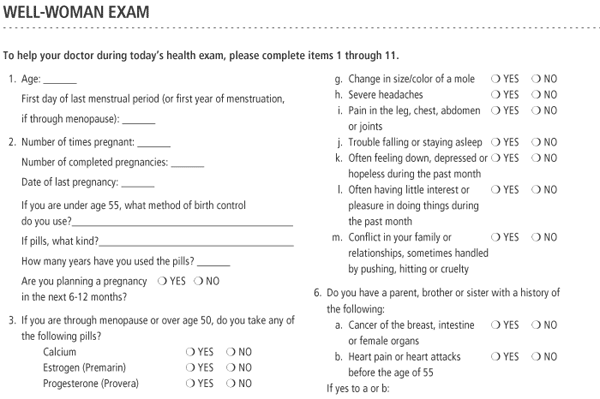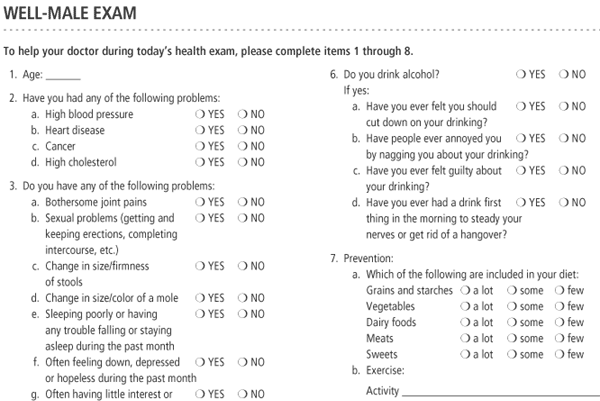
These two tools can help improve your care and documentation.
Fam Pract Manag. 2003;10(7):35-40

The foundation of disease prevention is identifying the patients’ conditions and the effective interventions available. This takes a long time using traditional history-taking, which leaves less visit time for other issues. Many traditional comprehensive history forms include issues that are not associated with evidenced-based interventions. And even when a physician makes a special effort to keep up with proven screening test recommendations, it is difficult to remember all the recommendations that apply to a specific patient.
To address these issues, I developed comprehensive tools that include a patient-completed history, exam documentation template and evidence-based screening test recommendations for all age groups. The tools, portions of which appear below, can be modified to conform to specific practice parameters or changes in disease-prevention recommendations.
How they work
Patients complete the history section, which is structured to allow what for most reasonably healthy patients will be a brief review by the physician. Standard medical and family history questions are included as well as questions about common issues that we often forget to ask about, such as sexual and urinary function, depression, sleep problems and addictions. All of the questions are written at an upper elementary level, but physicians should direct staff members to be sensitive to those patients who may not be able to read or completely understand the questions.
Physicians and other providers complete the last page of the forms. Practices can decide whether to attach this last page to the rest of the encounter form before or after the patient fills out the history section. A small amount of space at the top is designated for documentation of additional history. If the additional history relates specifically to one of the questions on the history portion of the forms, it may be easier to document it in the margin near the appropriate question. The physical exam items can be completed quickly by circling “normal” or “abnormal” and noting any specific abnormalities. Below the exam items, space is also provided for diagnoses and any associated plans that are not preventive. Finally, the “plan” section lists diagnostic and therapeutic preventive service recommendations from the U.S. Preventive Services Task Force, grouped by age where appropriate.
The concern has been raised that this form’s extensive screening medical history will lead to a lengthy office visit. However, I’ve not found that to be the case. If time permits, a minor issue can be dealt with as part of the preventive visit. Otherwise, the patient can return for a follow-up visit, or visits, to more extensively address any additional problems. Because the specific items on the encounter form are scientifically well supported, any additional visits generated by the form will be appropriate.
PREVENTIVE-VISIT ENCOUNTER FORMS
The following male and female preventive-visit encounter forms (shown in an abbreviated format below) can be downloaded as PDF files.
Well-woman exam:
Well-male exam:


The benefits
After using these preventive-visit encounter forms in my practice, I found that they simultaneously save time and improve patient flow, documentation and quality of care. Having patients complete their own, extensive medical history gives them something productive to do during a portion of their waiting time, promotes more honest answers and provides an effective illness identification tool. Visits are shorter or, in some cases, allow enough time for educating patients on unhealthy behaviors and chronic diseases that are often not adequately addressed. The encounter forms also make documentation more complete and improve the quality of the preventive care by reminding the physician to order the most up-to-date, evidence-based interventions.